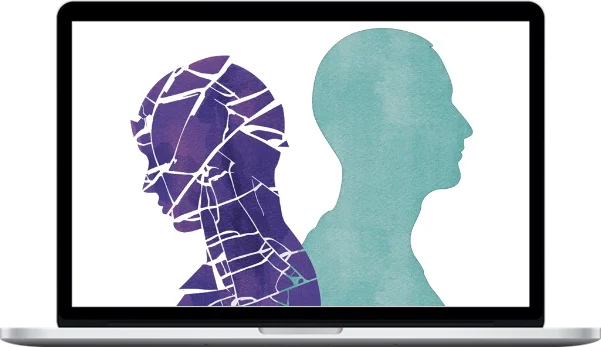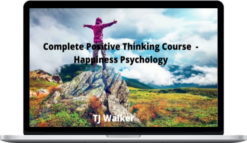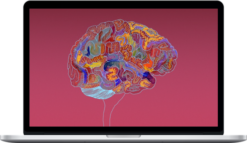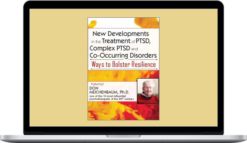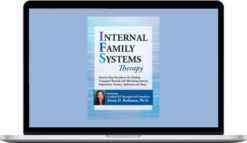NICABM – How To Work With Patients Whose Trauma Triggers Problems In Their Current Relationships
$97.00 $39.00
Total Sold: 1
»Instant Delivery
Description
NICABM – How To Work With Patients Whose Trauma Triggers Problems In Their Current Relationships
The Profound Impact of Trauma on Your Client’s Relationships (and How to Work with It)
Perhaps the most insidious impact of trauma . . .
. . . is how its aftereffects can disrupt every relationship your client has.
And without secure, healthy relationships to aid their recovery, it can be difficult to resolve the lingering symptoms of trauma.
So to help you address the aftereffects of trauma that can become embedded in your client’s relationships, we brought together 10 of the field’s leading experts.
They’ll share their best strategies to help clients forge a safe, healing sense of connection with others in the aftermath of trauma.
How to Work with Patients Whose Trauma Triggers Problems in Their Current Relationships
Strategies to Help You Home In on the Impact of Trauma on Your Patient’s Relationships
Bessel van der Kolk, MD Janina Fisher, PhD Stephen Porges, PhD
Terry Real, MSW, LICSW Richard Schwartz, PhD Thema Bryant, PhD Ruth Lanius, MD, PhD
- Two Types of Trauma That Can Knock the Social Engagement System Offline
- Specific Questions to Help Pinpoint Subtle Attachment Traumas
- A 3-Part Model to Help Patients Understand the Effect of Trauma on Their Relationships
- How to Work with the “Adaptive Child” That Is Often Activated in Relationships
- How a Patient’s “Exiled Parts” Can Harm Relationships
- Subtle Signs That a Male Patient May Have Suffered Sexual Abuse (and How to Address Them)
How to Work with Defensive Adaptations to Trauma That Can Strain Relationships
Ruth Lanius, MD, PhD Ron Siegel, PsyD Kelly Wilson, PhD
- How to Work with Couples When One Partner Freezes in the Face of Conflict
- Grounding Strategies Partners and Families Can Use When a Loved One Begins to Dissociate
- How to Help Patients Who Slip into Collapse/Submit Develop Healthier Defensive Strategies
- How to Help Patients Begin to Unravel Patterns of Pleasing and Appeasing
- How to Address the Impact of Trauma-Induced Shame on a Patient’s Relationships
Why Patients Re-enact Trauma from Past Relationships (and How to Help Stop the Cycle)
Bessel van der Kolk, MD Janina Fisher, PhD Ruth Lanius, MD, PhD
- Two Biological Factors That Drive a Patient to Re-enact Behaviors from Past Relationships
- One Key Reframe That Can Help Disrupt Unhealthy Behavioral Patterns
- Specific Language to Help Patients Better Understand the Destructive Nature of Their Behavioral Patterns
Strategies to Bring Your Patient’s Social Engagement System Back Online
Bessel van der Kolk, MD Stephen Porges, PhD Ruth Lanius, MD, PhD
- One Powerful Tool to Unlock Your Client’s Ability to Socially Engage
- Three Essential Keys to Help Patients Connect with Others in Healthier, More Functional Ways
- How to Nurture (or Repair) Your Client’s Ability to Trust Others
- How to Leverage the Therapeutic Relationship to Help Clients Connect with Others
How to Work with Couples Whose Relationship Problems Are Fueled by Past Trauma
Janina Fisher, PhD Pat Ogden, PhD Martha Sweezy, PhD, LICSW
- An Expert Strategy to Help Partners Recognize the Wounded Parts in Each Other (and Understand How Those Parts Become Activated)
- How to Help Patients Speak For Their Wounded Parts (and Not From Them)
- How to Uncover the Implicit Cues That Can Activate a Partner’s Trauma Response
About NICABM
We proudly provide continuing education for practitioners who are dedicated to being the best in their craft. Our goal is to develop programs that connect you with the top experts and the latest strategies in the field, to help you achieve better outcomes, more quickly with each of your clients.
More courses from the same author: NICABM
Delivery Policy
When will I receive my course?
You will receive a link to download your course immediately or within 1 to 21 days. It depends on the product you buy, so please read the short description of the product carefully before making a purchase.
How is my course delivered?
We share courses through Google Drive, so once your order is complete, you'll receive an invitation to view the course in your email.
To avoid any delay in delivery, please provide a Google mail and enter your email address correctly in the Checkout Page.
In case you submit a wrong email address, please contact us to resend the course to the correct email.
How do I check status of my order?
Please log in to HealthcareCourse account then go to Order Page. You will find all your orders includes number, date, status and total price.
If the status is Processing: Your course is being uploaded. Please be patient and wait for us to complete your order. If your order has multiple courses and one of them has not been updated with the download link, the status of the order is also Processing.
If the status is Completed: Your course is ready for immediate download. Click "VIEW" to view details and download the course.
Where can I find my course?
Once your order is complete, a link to download the course will automatically be sent to your email.
You can also get the download link by logging into your HealthcareCourse account then going to Downloads Page.
Related products
Total sold: 4


